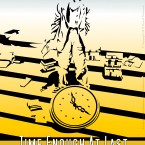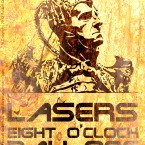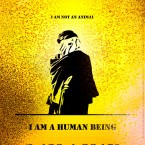It is truly interesting that fan art is this week’s topic, since it is something I am not only intimately familiar with as an illustrator, but this week my freelance life centers around that very idea. One of the things I enjoy doing is interviewing the cover artists for Apex Magazine, and I am sending several this week. Fan art questions often come up with those artists, who create fan art for various reasons. Along with that, I am also working on a piece of fan art this week, in the hopes that it will be published later this year in a book filled with art based on the 1982 film The Thing.
Fan art for me is something that, as an artist, hits two major points that are mentioned in the video, Fan Art: An Explosion of Creativity. First, each piece of art that I create, whether it is just a simple sketch, or a piece of fan art, up to a published book cover, means everything to me. That happens mostly in the process, as no matter what kind of art it is I am putting a piece of my soul onto the page. The final piece makes the process meaningful, I’ve brought something into this world that wasn’t there before, in my own way.
Secondly, there is the feeling with fan art that I do care for these subjects, and I want to bring my view of them to the world. In the video, artist Sam Spratt describes fan artists creating this art as, “a means of expression of how much they care about these things.” The artists want to be a part of that world, to add to it. As with many of the artists I’ve interviewed, artist Denis Corvus explained that not only does he want to create fan art with the character’s basics, but to add his own take to the piece to get even more inspiration as a fan2. That is exactly right for many of the fan art pieces I have created. This week’s art will be based on one of my favorite films, and that expression of how I see the actions and characters in the movie means everything to me. There is a balance between recognition of the character and the unique expression of the artist, and how much I care for the film will hopefully be evident in the final piece.
Many artists create fan art, especially those who work on illustration versus fine art. To many artists that I have interviewed for Apex Magazine, fan art is to illustration what still life is to a fine artist. It is reproducing something in an effort to capture the essence of a known quantity. Style will always be apparent, but in the end, just as a still life orange should feel like an orange, a representation of a character should feel like that character. As the video shows, there are many different visions of what Sherlock and Watson look like, but the essence of those characters needs to be recognizable through those styles for the fan art to really succeed. When the artist hits those notes, they feel like they are part of the product, that their work will become part of the essence of those characters. There is always the hope that the Finn/Fiona situation from the video will happen, that a fan artist’s view will actually become canon for the character they represented.
I think we are at an interesting point when it comes to fan art, the media and its users, and new versus original creations. The corporations that own the characters in many ways are keeping the conversation going when it comes to fan art. On one side, as an artist that attends conventions, many artists sell fan art at their booths. Corporations, especially comic book companies, essentially turn a blind eye towards fan art of this nature, provided that artists do not try to sell thousands of prints based on copyrighted works. Some fan creations do overstep their bounds, however, such as the case of a Star Trek fan film. Creators of the fan-produced film, Axanar, were sued by copyright owners CBS and Paramount, due to the film not just using Star Trek content but exceeding what the corporations could allow as fair use1. In the Axanar case, the creators did more than an homage, but actually veered into the a large-scale realm, using strong elements of the Star Trek universe without permission.
An interesting side note is the common idea that the public domain has been shrinking over the past century, due to stricter copyright laws, and that it stifles a culture of remixing and creation. The public domain was meant to promote cultural creativity after a copyright has ended, and keeping nearly all works out of the public domain damages the creativity that is essential to a culture3. Fan art, skirting copyright as it does, could be seen as a way to answer that public domain loss. Artists are remixing and changing owned characters and worlds into their own unique visions, and as long as they do not take it as far as Axanar they may fly under the radar of the large corporations.
The Axanar case is an extreme example of how a fan piece can become a new and original media itself. The creators took that a bit far, trying to equal the level of the actual Star Trek films and television episodes. For most fan artists, though, the idea is much simpler. Fan art is a way to use their talents to create something in the universe they love, and to put their own spin on it. As the video mentions, sometimes those fan pieces end up becoming a part of the original works, and many of the artists I have talked to would love for their creations to do so. Fan art is an opportunity to bring a new, fresh idea to the world, and still be recognized through the original cultural creation.
Examples of my own fan art, with the inspirations listed in the captions:
- The Twilight Zone
- Time Bandits
- The Lord of the Rings: The Return of the King
- In The Mouth of Madness
- The Creature From the Black Lagoon
- The Elephant Man
References
- Buckley, S. (2017). ‘Star trek’ fan film loses fair use case, moves to jury trial. Retrieved from https://www.engadget.com/2017/01/05/star-trek-fan-film-loses-fair-use-case-moves-to-jury-trial/
- Dickerson, R. (2016). Interview with Cover Artist Denis Corvus. Apex Magazine (89). Retrieved from http://www.apex-magazine.com/interview-with-cover-artist-denis-corvus/
- Toula, C. M., & Lisby, G. C. (2014). Towards an affirmative public domain. Cultural Studies, 28(5/6), 997-1021. doi:10.1080/09502386.2014.886490








